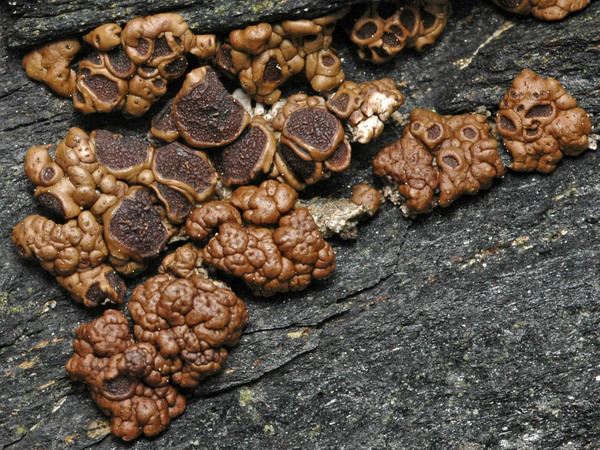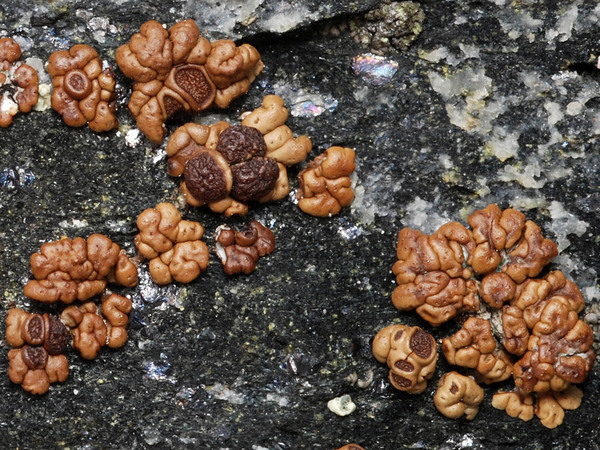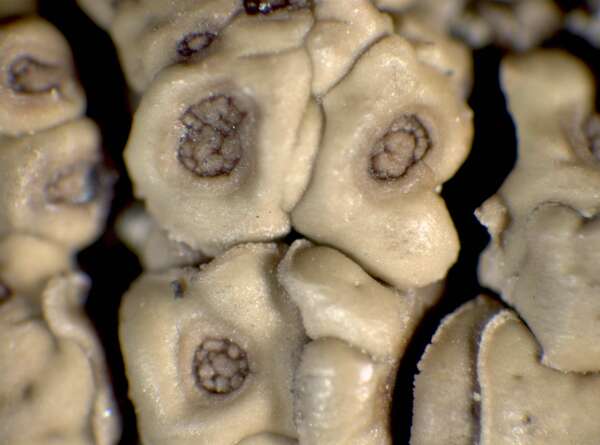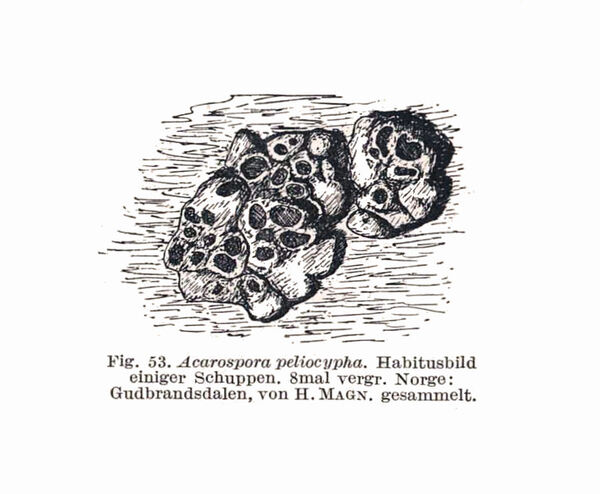Acarospora squamulosa (Schrad.) Trevis.
Riv. Per. Lav. Regia Accad. Sci. Lett. Arti Padova, 1: 263. 1853. Basionym: Lichen squamulosus Schrad. - Ann. Bot. (Usteri), 22: 84. 1797
Synonyms: Acarospora chalcophila H. Magn.; Acarospora fuscata var. peliscypha (Th. Fr.) Nyl.; Acarospora montana H. Magn.; Acarospora nitrophila var. chalcophila (H. Magn.) Clauzade & Cl. Roux; Acarospora peliocypha (Wahlenb.) Th. Fr.; Acarospora peliscypha Th. Fr.; Parmelia peliocypha Wahlenb.
Distribution: N - TAA, Lomb, Piem (Matteucci & al. 2015b), VA (Piervittori & Isocrono 1999, Matteucci & Vanacore Falco 2015). C - Sar.
Description: Thallus crustose, episubstratic, areolate-subsquamulose, pale brown to dark chestnut brown, epruinose, mostly shiny, usually forming large patches. Areoles very variable in size and shape, 0.3-3 x 0.2-2 mm, 0.1-0.5 mm thick, usually convex, sometimes subglobose, black in lower part along the margins, dispersed or contiguous. Epicortex lacking or very thin; cortex 30-50 µm thick, brown in uppermost part, colourless in lower part, the cortical cells 3-5 µm wide; algal layer continuous 50-200 μm thick; medulla white, of thin-walled hyphae; lower cortex 10-15 µm thick, black, developed only in the marginal zone. Apothecia pseudolecanorine, usually 1 per areole, at first impressed, but soon prominent, 0.3-1.4 mm across, with a very rough, strongly rugose, often umbonate, dark reddish brown disc surrounded by a thick, shiny, prominent thalline margin. Proper exciple 6-15(-30) µm thick at base, 30-60 µm thick in upper part, I-; epithecium brown, 15-30 µm high; hymenium colourless, 90-100 µm high, the hymenial gel hemiamyloid, K/I+ light blue fading to light red; paraphyses 1.5-2 µm thick at mid-level, more or less swollen and up to 3 µm wide at apex; subhymenium 25-50 µm high, IKI+ blue (euamyloid); hypothecium 10-30 µm high. Asci 100-200-spored, clavate, the apical dome K/I-, 70-90 x 16-20 µm. Ascospores 1-celled, hyaline, subcylindrical, (3-)4-5(-6) x 1-2 µm. Pycnidia inconspicuous, c. 100 x 60 µm, with ampulliform conidiogenous cells. Conidia mostly 2 x c. 1 µm. Photobiont chlorococcoid. Spot tests: cortex K-, C+ red, KC+ red, P-. Chemistry: gyrophoric acid.Note: an arctic-alpine to boreal-montane, probably circumpolar species found on siliceous, often iron-rich substrata, on exposed birds' perching rocks (e.g. windy ridges, isolated boulders), with optimum near or above treeline. See also note on A. bullata. For nomenclatural matters see Knudsen & al. (2019).
Growth form: Crustose
Substrata: rocks
Photobiont: green algae other than Trentepohlia
Reproductive strategy: mainly sexual
Species of metal-rich rocks
Commonnes-rarity: (info)
Alpine belt: very rare
Subalpine belt: rare
Oromediterranean belt: extremely rare
Montane belt: extremely rare
Submediterranean belt: absent
Padanian area: absent
Humid submediterranean belt: absent
Humid mediterranean belt: absent
Dry mediterranean belt: absent

Predictive model
Herbarium samples

Source: Knudsen K., Arcadia L., Kocourková J. 2019. Acarospora squamulosa, the correct name for A. peliocypha. Mycotaxon, 134, 2: 281-287.
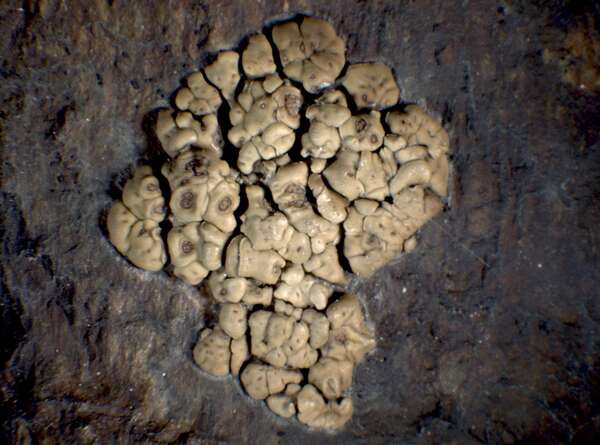

P.L. Nimis; Owner: Department of Life Sciences, University of Trieste
Herbarium: TSB (33838)
2001/12/09
Growth form: Crustose
Substrata: rocks
Photobiont: green algae other than Trentepohlia
Reproductive strategy: mainly sexual
Species of metal-rich rocks
Commonnes-rarity: (info)
Alpine belt: very rare
Subalpine belt: rare
Oromediterranean belt: extremely rare
Montane belt: extremely rare
Submediterranean belt: absent
Padanian area: absent
Humid submediterranean belt: absent
Humid mediterranean belt: absent
Dry mediterranean belt: absent

Predictive model
| Herbarium samples |

Source: Knudsen K., Arcadia L., Kocourková J. 2019. Acarospora squamulosa, the correct name for A. peliocypha. Mycotaxon, 134, 2: 281-287.


 INDEX FUNGORUM
INDEX FUNGORUM
 GBIF
GBIF
 DOLICHENS
DOLICHENS
